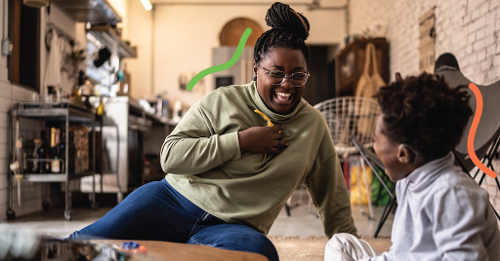Stay up to date.
Stay connected with tips, resources & stories on language access.

Sign language is not a one-size-fits-all language.
There are many different forms used around the world, including American Sign Language (ASL), French Sign Language (FSL), and British Sign Language (BSL), all of which have unique gestures and phrases. Like English and other spoken languages, ASL has different dialects used in the Deaf community. A notable dialect that has been gaining recognition in recent years is Black American Sign Language (BASL).
Here, we explore five things to know about BASL and its significance in the Black Deaf community:
The first school for the Deaf in the U.S. opened in 1817 but did not admit Black Deaf students. It wasn't until after the opening of the first Black Deaf school in 1869 that Black Deaf students could attend a school that taught sign language.
During segregation, white Deaf schools began teaching a different form of sign language focused on lip-reading and speaking. In contrast, the Black Deaf schools taught a more traditional form stemming from early American Sign Language.
Once schools became integrated, it became clear to Black Deaf students that the sign language they used was not the same one taught in the other schools.
Although ASL and BASL are closely related, there are a few key distinctions between the two forms. BASL typically uses two-handed gestures, compared to modern-day ASL, which uses one hand to sign.
Hand placement also varies between the two languages. BASL typically places gestures around the forehead area, whereas ASL places gestures lower on the body. The most noticeable difference is BASL is known for using more facial expressions and physical space when signing.
In addition to different styles of signing, BASL and ASL have different signs for some words and phrases. BASL is evolving as the young BASL community introduces new signs incorporating African American Vernacular English and other cultural phrases. These signed phrases involve more body language and look different than typical ASL gestures.
4. Not all ASL interpreters are equipped to sign BASL.
When interpreting for BASL, matching interpreters to the speakers is important. Not all ASL interpreters have the experience, cultural knowledge, or understanding needed to deliver the message effectively. In fact, an estimated 85% of ASL interpreters identify as white. Working with interpreters trained in BASL can help ensure communication is delivered to audiences as intended.
One way to make BASL interpreters more accessible is by using video remote interpreting (VRI) technology. VRI can be a powerful tool for providing linguistically and culturally appropriate services by broadening the pool of available BASL interpreters.
It's estimated that 50% of Black Deaf individuals use BASL. Although BASL was not traditionally taught in schools, it continued to be passed down through generations of Black Deaf families and communities. BASL has gained traction on social media due to the younger generation of BASL signers, who are preserving BASL by educating their internet followers about the language's significance and celebrating the culture of the Black American Sign Language community.
To learn more about BASL, check out The Black ASL Project.
Everyone should have equal and inclusive access to language services, no matter what language they speak. Contact GLOBO to learn how to improve experiences for your Deaf community, or download our guide, Best Practices for Working with an Interpreter, to get started.